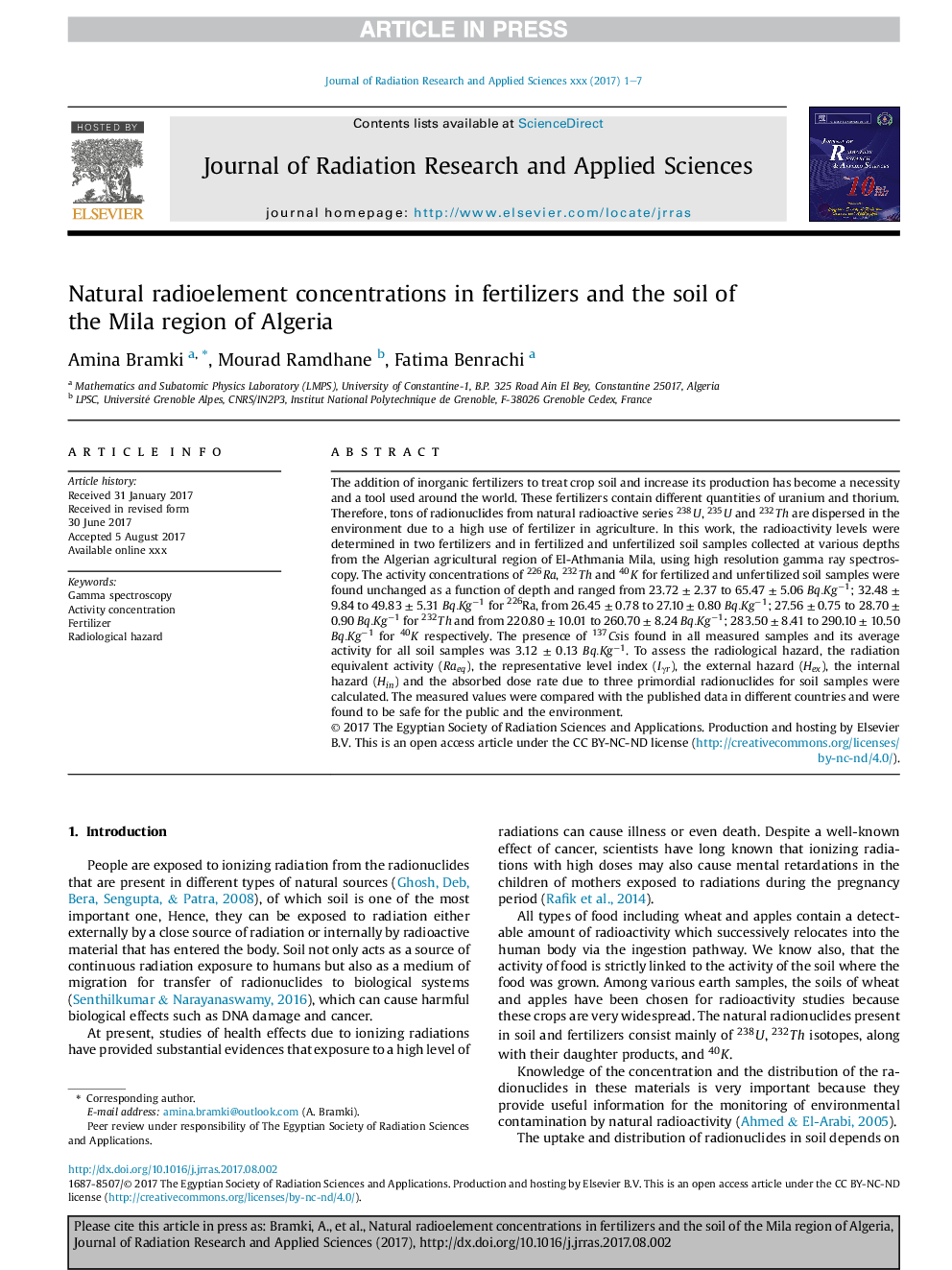| Article ID | Journal | Published Year | Pages | File Type |
|---|---|---|---|---|
| 7968881 | Journal of Radiation Research and Applied Sciences | 2018 | 7 Pages |
Abstract
The addition of inorganic fertilizers to treat crop soil and increase its production has become a necessity and a tool used around the world. These fertilizers contain different quantities of uranium and thorium. Therefore, tons of radionuclides from natural radioactive series U238, U235 and T232h are dispersed in the environment due to a high use of fertilizer in agriculture. In this work, the radioactivity levels were determined in two fertilizers and in fertilized and unfertilized soil samples collected at various depths from the Algerian agricultural region of El-Athmania Mila, using high resolution gamma ray spectroscopy. The activity concentrations of R226a, T232h and K40 for fertilized and unfertilized soil samples were found unchanged as a function of depth and ranged from 23.72 ± 2.37 to 65.47 ± 5.06 Bq.Kgâ1; 32.48 ± 9.84 to 49.83 ± 5.31 Bq.Kgâ1 for 226Ra, from 26.45 ± 0.78 to 27.10 ± 0.80 Bq.Kgâ1; 27.56 ± 0.75 to 28.70 ± 0.90 Bq.Kgâ1 for T232h and from 220.80 ± 10.01 to 260.70 ± 8.24 Bq.Kgâ1; 283.50 ± 8.41 to 290.10 ± 10.50 Bq.Kgâ1 for K40 respectively. The presence of C137sis found in all measured samples and its average activity for all soil samples was 3.12 ± 0.13 Bq.Kgâ1. To assess the radiological hazard, the radiation equivalent activity (Raeq), the representative level index (Iγr), the external hazard (Hex), the internal hazard (Hin) and the absorbed dose rate due to three primordial radionuclides for soil samples were calculated. The measured values were compared with the published data in different countries and were found to be safe for the public and the environment.
Related Topics
Physical Sciences and Engineering
Materials Science
Materials Science (General)
Authors
Amina Bramki, Mourad Ramdhane, Fatima Benrachi,
